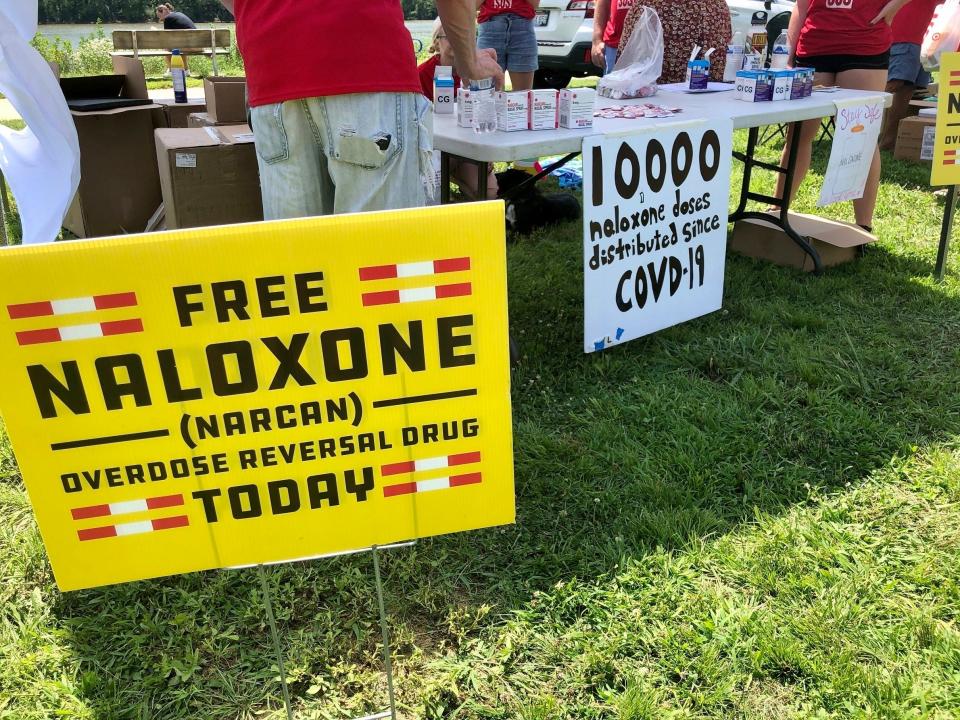These new synthetic opioids could make fentanyl crisis look like 'the good old days'
The Centers for Disease Control and Prevention recently reported that in the 12-month period ending last August, about 74,000 people died from fentanyl-related overdoses.
While politicians and policymakers amp up calls for more brutal crackdowns on fentanyl smuggling, a “new” class of synthetic opioids has been showing up in overdose victims with the potential to make America look back on the fentanyl crisis as “the good old days.”
Chemists refer loosely to this category of drugs as “nitazenes,” even though the term is incorrect; it should be “benzimidazole-based opioids.” The Swiss drug maker CIBA, now part of Novartis, developed the first nitazenes in the late 1950s as potential pain treatments. However, none was approved because they were too dangerously potent.
In 2020, the World Health Organization reported that isotonitazene (which drug users call “iso” or “tony”) began appearing in forensic toxicology reports in six European countries, Canada and the United States. In 2022, the Tennessee Department of Health reported that overdose deaths from synthetic opioids classified as nitazeneshave increased fourfold in just two years.
Just recently, the British news media reported that the United Kingdom has experienced a “big influx” of nitazenes. London’s Metropolitan Police seized more than 150,000 nitazene tablets in a single drug haul last fall.
These drugs are not only appearing in adulterated opioids. A U.K. drug testing service determined that, since September, nitazenes have been found in 20 samples of black-market benzodiazepines (common tranquilizers such as Xanax) taken from all parts of the country.
People who purchase benzodiazepines on the black market wouldn’t expect nitazenes to be a contaminant and could become overdose victims.
She thought it was Xanax. She died of fentanyl poisoning. Just one fake pill can kill.
Up to 1,000 times more potent than morphine
There are two primary reasons that the emergence of nitazenes in the street drug supply is alarming. One is their extreme potency. An analog called etonitazene may be as much as 1,000-fold more potent than morphine. By comparison, fentanyl is only 100 times more powerful than morphine.
A recent study of metonitazene, a closely related drug, found it took three doses of the opioid overdose antidote naloxone to treat a metonitazene overdose, compared with one dose for fentanyl. In a couple of cases, even three doses were insufficient to save the users’ lives, leading the authors to conclude that “metonitazene appears to have the most severe clinical toxicity” of nitazenes they detected in overdose toxicology studies.

The other reason is that nitazenes are different from fentanyl and its derivatives because researchers fairly well understand the range of the potency of numerous circulating fentanyl derivatives; it is unlikely that any new, unknown derivatives will be more dangerous than those already known and can be identified.
However, researchers know little about nitazene derivatives. Scientists don’t understand how modifications to their chemical structure will affect their potency, making nitazenes the “Wild West” of street drugs.
Our limited information about nitazenes suggests that even minimal changes in their chemical structure can profoundly change their opioid-like properties; two close derivatives that chemists would expect to have similar potency may differ greatly in strength.
Opinion alerts: Get columns from your favorite columnists + expert analysis on top issues, delivered straight to your device through the USA TODAY app. Don't have the app? Download it for free from your app store.
Worse still, unlike fentanyl derivatives, which have the same basic scaffold as fentanyl, nitazenes encompass a diverse set of compounds with a wide variety of chemical structures. This makes the number of potentially dangerous derivatives essentially limitless.
Drug cartels could easily make a variety of chemically distinct derivatives, some of which will be deadly. And how will these new drugs be tested? On the street, of course.
The potential for overdoses goes off the charts.
Blame 'the iron law of prohibition'
News reports about the growing presence of nitazenes among the mix of street drugs should come as no surprise to anyone familiar with what has come to be known as “the iron law of prohibition.” Drug policy analysts often phrase it as, “The harder the enforcement, the harder the drugs.”
Drug prohibition drives the creation of more potent drug forms to enhance business efficiency. Smaller drug packages simplify smuggling, enabling dealers to subdivide stronger forms into smaller portions for sale, improving their risk/benefit ratio.
The "iron law" explains the rise in THC concentration in cannabis, the shift from powdered cocaine to crack cocaine, and the progression from cracking down on black market prescription pain pills to the emergence of heroin and, subsequently, fentanyl.
America's fentanyl crisis: COVID has been hiding another epidemic. We have to do more for our opioid patients.
We’ve known for some time that drug overdose deaths have been rising exponentially since at least the late 1970s – with different drugs predominating as the cause in different periods – and no end in sight.
Lawmakers and policymakers keep shifting the boogeyman for the crisis. First, they blamed the situation on doctors prescribing pain pills to their patients. When heroin replaced prescription pain pills as the cause, and when illicit fentanyl replaced heroin, they blamed illegal immigration. When the nitazene crisis debuts, will they finally place the blame on drug prohibition, where it has always belonged?
The war on drugs is digging society into a deep and deadly hole. Maybe the advent of nitazenes will finally persuade policymakers to stop digging.
Dr. Jeffrey A. Singer practices general surgery in Phoenix and is a senior fellow at the Cato Institute. Josh Bloom is director of chemical and pharmaceutical science at the American Council on Science and Health.
You can read diverse opinions from our Board of Contributors and other writers on the Opinion front page, on Twitter @usatodayopinion and in our daily Opinion newsletter.
This article originally appeared on USA TODAY: What are nitazenes? Drug could make fentanyl look like 'good old days'

